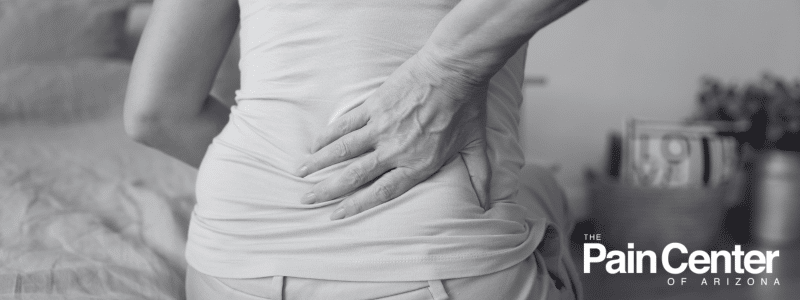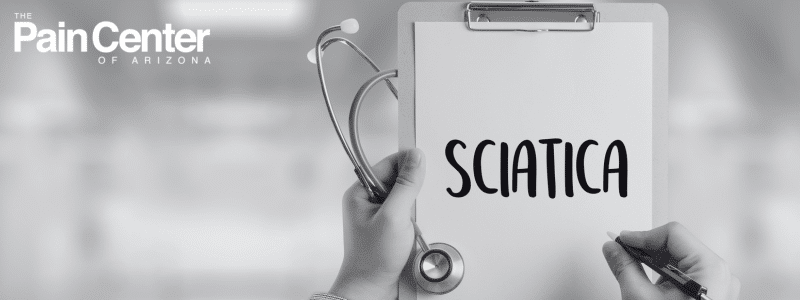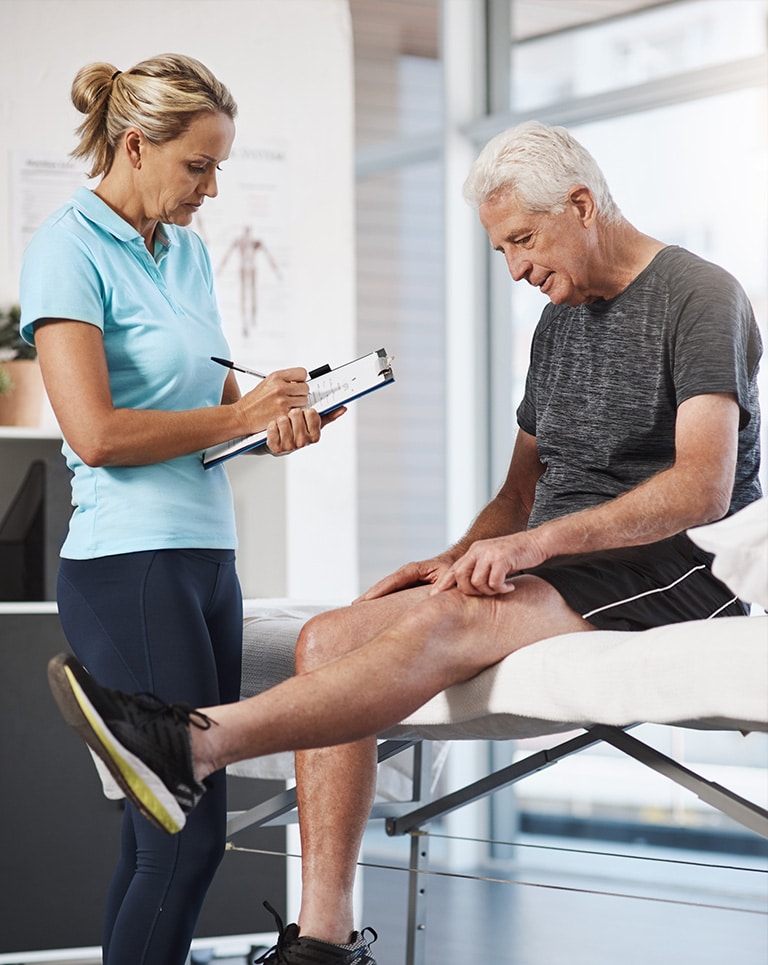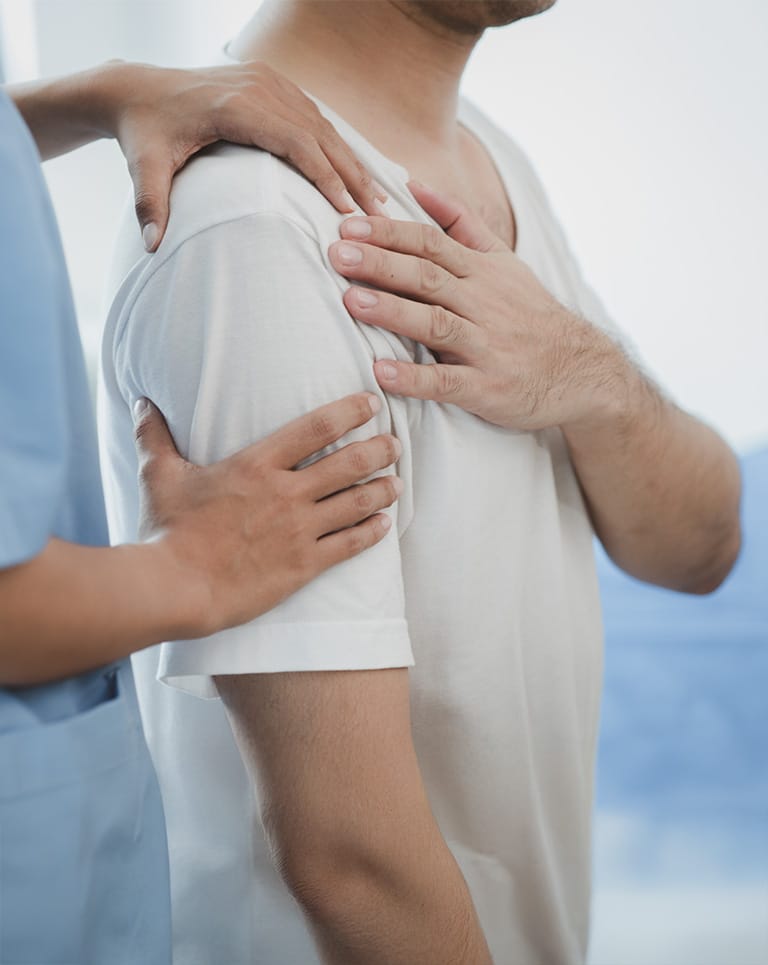
It can be overwhelming to choose the right choice for your back pain, especially when there are so many treatment options. That’s why we break down each of our surgical procedures to our patients so they can understand each one better.
In this blog, we’ll explore the lumbar microdiscectomy how it can benefit your lower back pain by looking at the following:
- What is lumbar microdiscectomy?
- How lumbar microdiscectomy addresses sciatica
- The ideal candidates for lumbar microdiscectomy
- FAQ: The recovery process after lumbar microdiscectomy
What is Lumbar Microdiscectomy?
Whether it’s due to wear and tear or an injury, herniations in your spinal discs can occur. Over time, these damaged discs create pressure on the spinal nerve column and contribute to pain, numbness, and weakness in the lower back, legs, feet, and buttocks.
By using minimally invasive techniques, a lumbar microdiscectomy identifies the affected region and removes herniated disc fragments from the spine. This relieves the built-up pressure and symptoms that develop from it.
Is Microdiscectomy Major Surgery?
No, microdiscectomy is a minimally invasive surgery. That means we do minor trauma to the target area to reduce recovery time significantly. Likewise, the majority of patients also get to go home on the same day of their spine surgery.
How Lumbar Microdiscectomy Addresses Sciatica

Sciatica pain radiates from the lower back down to the legs. A person with sciatica may experience weakness, numbness, or tingling in one or both legs, which can greatly impact their quality of life. The lumbar microdiscectomy approach targets underlying causes of sciatica, including slipped or herniated disks and spinal stenosis.
Lumbar Microdiscectomy for Lower Back Pain Relief
To address your lower back pain, the lumbar microdiscectomy procedure creates a small incision in the lumbar region (the size of a nickel ~2 cm) to locate and remove damaged discs using small surgical instruments.
Your surgeon provides you with a local anesthetic before the procedure, so that the entire surgery is quick and painless. Once the cause of nerve root compression is removed, you’ll be stitched back up and move on to recovery.
The Ideal Candidates for Lumbar Microdiscectomy
The Pain Center offers a variety of science-backed treatments for back pain. You can speak with one of our doctors to see whether lumbar microdiscectomy is best for you.
Who Benefits Most from This Procedure?
Lumbar microdiscectomy is designed for patients who…
- Experience significant chronic pain from complications that are compressing the nerve
- Have not responded to non-surgical treatments
- Are between the ages of 18 to 60
- Have no severe medical comorbidities
- Have a healthy BMI
- Don’t smoke or use tobacco products
The Risks and Benefits of Lumbar Microdiscectomy
When you sit down for your initial assessment with your doctor, they’ll evaluate your medical history, physical health, and lifestyle to weigh the pros and cons of the procedure. While complications are uncommon, it’s vital that you’re a good fit for the surgery and that you don’t have any factors that put you at a higher risk.
Benefits of Lumbar Microdiscectomy
- Pain, pressure, weakness, and tingling are relieved due to nerve compression in the lower back, legs, feet, and buttocks.
- Treats sciatica leg pain
- Restores strength to the muscles
- Removes disc herniations
Risks of Lumbar Microdiscectomy
- Infection during or after surgery
- Blood clots
- Nerve damage
- Bleeding from the incision site
FAQ: Recovery Process After Lumbar Microdiscectomy
How long does it take to recover from a lumbar microdiscectomy?
You’ll return to your normal activities gradually as your body heals. By week two, you’ll be able to drive and participate in light activities; by week six, bending, lifting, and twisting can resume. Most patients return to everyday life by week six or eight.
What to expect during the healing phase
At the beginning of recovery, it’s typical to experience discomfort at the incision site. Your doctor will prescribe you with pain management medications to combat this. Likewise, you must be patient with yourself as your body heals. Take it slow and allow physical therapy and your body’s natural process to do the work.
Can I walk after lumbar microdiscectomy?
Yes. Walking is an essential part of recovery. Each day, you will incorporate more steps into your routine, taking short walks and avoiding over-exerting yourself.
How bad is the pain after microdiscectomy?
Post-op pain is subjective, and each patient will have their own experience. A stiff back and soreness are the most commonly reported symptoms during the first few weeks following a microdiscectomy. Most people find the discomfort easily manageable with pain medication.
Do you have to wear a brace after microdiscectomy?
Our microdiscectomy is minimally invasive and focuses on minimizing trauma to the incision site. Because of this, it’s unlikely that your doctor will have you wear a brace following surgery.
How do you sleep after a lumbar microdiscectomy?
The best position to sleep in following a microdiscectomy is to lie on your back with your knees bent and a pillow under them. Additionally, you can try to lie on your side with your knees bent and a pillow between your legs. These positions allow you to be mindful of the incision site while maintaining comfort.




